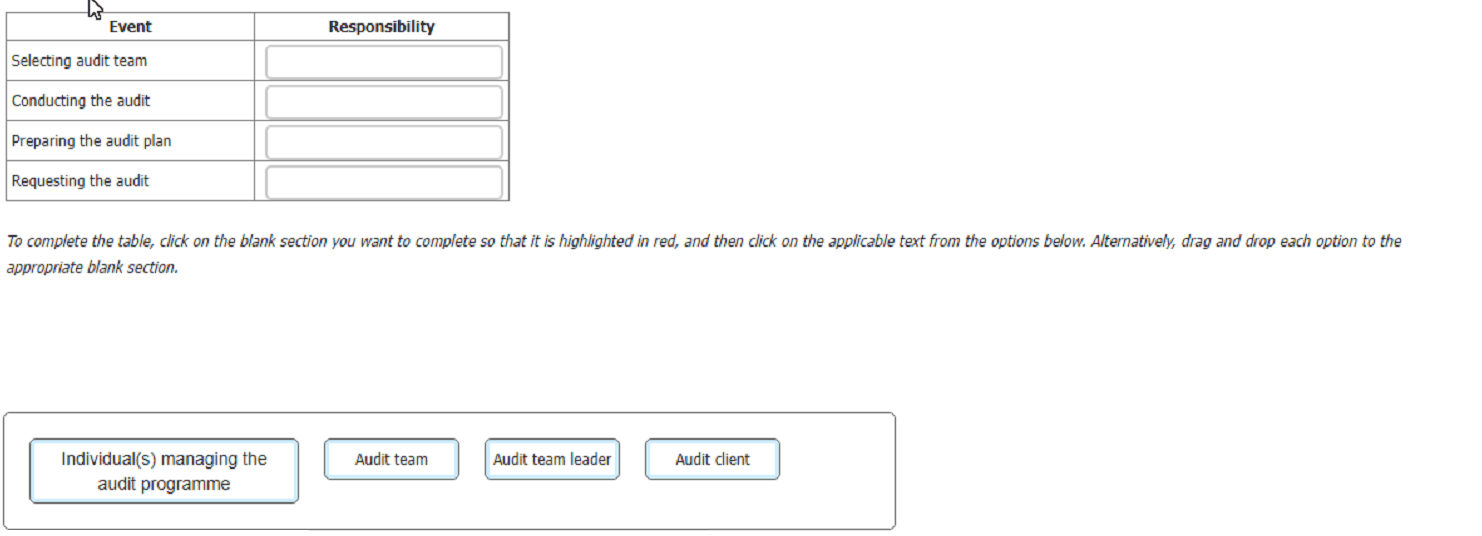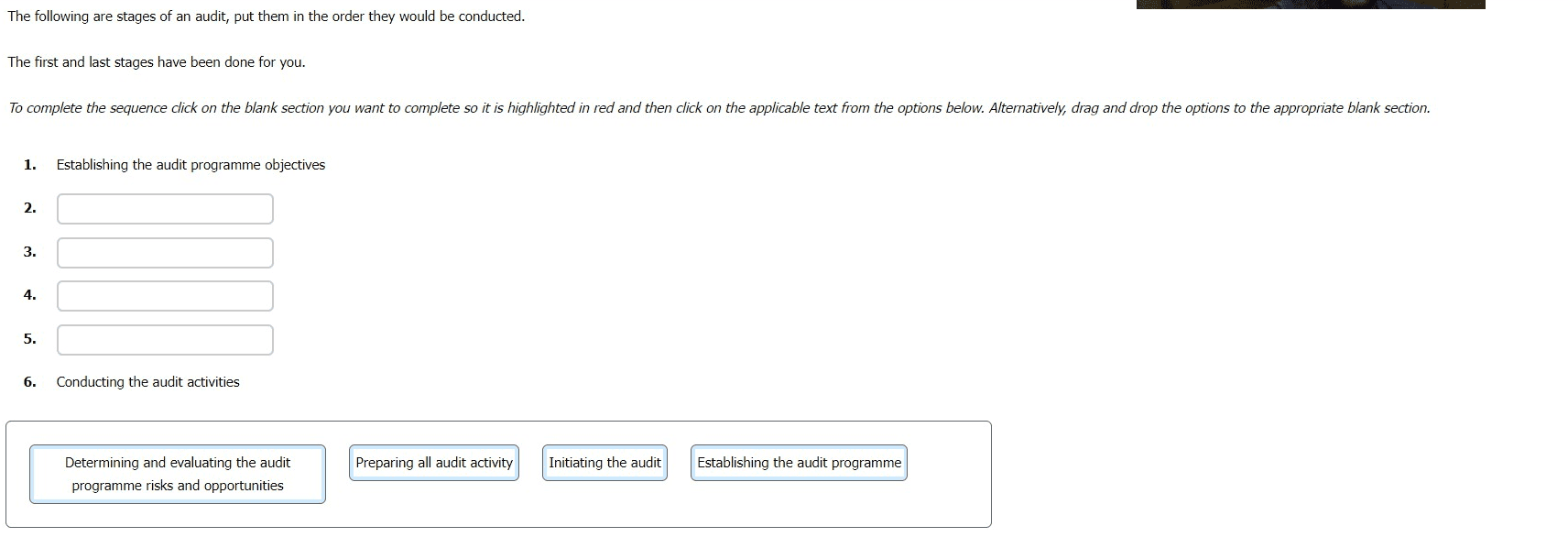PECB ISO-9001-Lead-Auditor - QMS ISO 9001:2015 Lead Auditor Exam
The ISO 9001 clause 5.1.1 states top management shall demonstrate leadership and commitment with respect to the quality management system.
In the context of the ISO 9001 management system certification, select the one correct description of top management's responsibilities.
Select the two activities which pertain to Third-Party Audit.
According to the guidance provided in ISO 19011, a second-party opening meeting should cover many elements.
From the following options, select the four items that should not be included in the opening meeting.
In the context of a third-party audit, match the event with the responsibility for conducting it.

Select the term that best describes the purpose of retaining documented information in a quality management system to ISO 9001.
In the context of a third-party audit, match the activity with the party responsible in relation to the audit process.

Scenario 6: Davis Clinic (DC) is an American medical center focused on integrated health care. Since its establishment DC was committed to providing qualitative services for its clients, which is the reason why the company decided to implement a quality management system (QMS) based on ISO 9001. After a year of having an active QMS in place, DC applied for a certification audit.
A team of five auditors, from a well-known certification body, was selected to conduct the audit. Eva was appointed as the audit team leader. After three days of auditing, the team gathered to review and examine their findings. They also discussed the audit findings with DC's top management and then drafted the audit conclusions.
In the closing meeting, which was held between the audit team and the top management of DC. Eva presented two nonconformities that were detected during the audit. Eva stated that the company did not retain documented information regarding its outsourced services for an analysis laboratory and regarding the conducted management reviews. During the closing meeting, the audit team required from DCs top management to come up with corrective action plans within two weeks. Although the top management did not agree with the audit findings, the audit team insisted that the auditee must submit corrective actions within the given time frame in order for the audit activities to continue.
Once the action plans were evaluated, the audit team began preparing the audit report. Eva required from the team to provide accurate descriptions of the audit findings and the audit conclusions. The report was then distributed to all the interested parties involved in the audit, including the certification body Based on the report, the certification body together with Eva, as the audit team leader, made the certification decision.
Based on the scenario above, answer the following question:
The audit team delayed audit activities until DC’s top management submitted their action plans. Is this acceptable?
Scenario 2:
Bell is a Canadian food manufacturing company that operates globally. Their main products include nuts, dried fruits, and confections. Bell has always prioritized product quality and has maintained a good reputation for many years. However, the company's production error rate increased significantly, leading to more customer complaints.
To increase efficiency and customer satisfaction, Bell implemented a Quality Management System (QMS) based on ISO 9001. The top management established a QMS implementation team comprising five middle managers from various departments, including Leslie, the quality manager.
Leslie was responsible for assigning responsibilities and authorities for QMS-related roles. He also suggested including a top management representative in the QMS team, but top management declined due to other priorities.
The team defined the QMS scope as:
"The scope of the QMS includes all activities related to food processing."
Leslie established a quality policy and presented it to the team for review before top management approval. Top management also proposed a new strategy for handling customer complaints, requiring biweekly customer surveys to monitor customer perceptions.
Which of the following indicates that Bell has defined its quality objectives?
What is an advantage of group interviews?
The following are stages of an audit, put them in the order they would be conducted.







